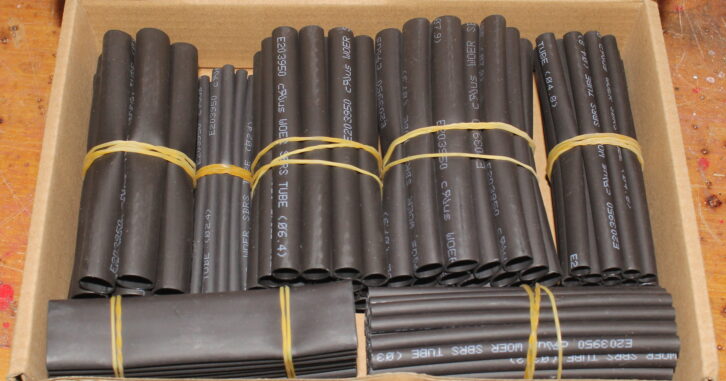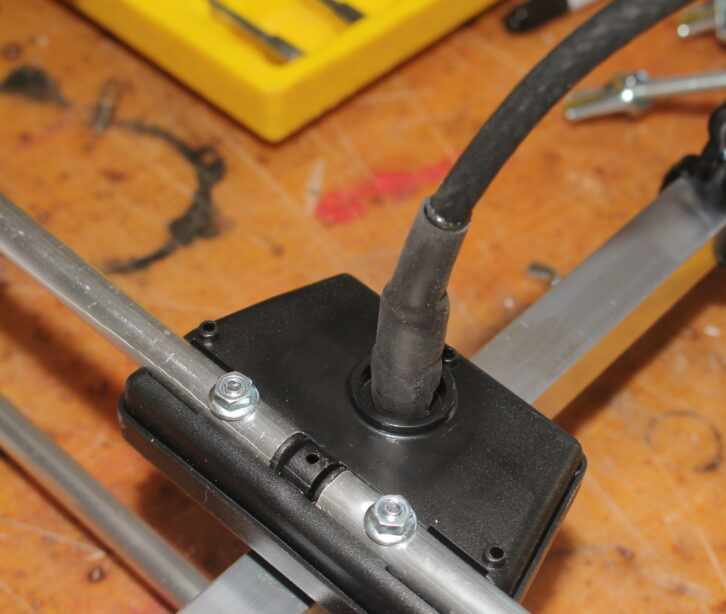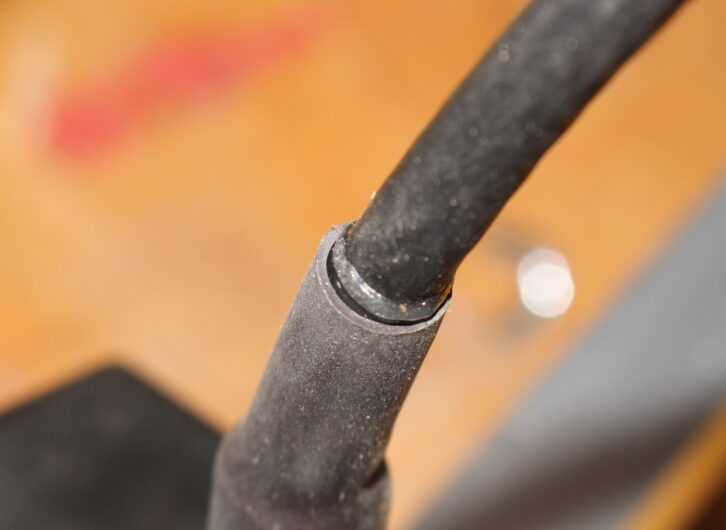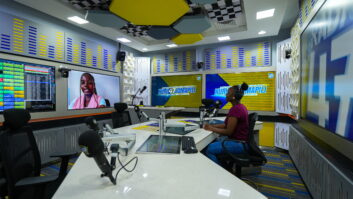Common methods of weatherproofing Type N or larger coaxial connections include self-vulcanizing or mastic tapes wrapped around the connector.
Rural Florida Communications Cooperative electrical engineer Wayne Eckert notes that when working with smaller connectors such as F-connectors or cord splices, you’ll often see electrical tape used to create a “seal.” This isn’t a long-lasting solution, though I guess it’s better than nothing.

Wayne recommends double-walled heat-shrink tubing. This type of heat shrink includes an inner lining of hot melt glue with excellent bonding properties. The shrinkage ratio is better than two times (closer to three times) the initial diameter, and the hot melt glue completely seals the tubing at both ends.

The seal is moisture-proof and splash-proof. In the accompanying photos you can see that a bit of the inner liner glue has migrated out of the ends as the tubing shrunk, creating a hermetic seal around the F connector.

Should it become necessary to access the connector, you can lash the tubing with a box cutter and pull it free of the connector or splice. That’s not an option when you’re working with mastic.
Wayne obtains his kits from www.mpja.com, where the stock number is 38443 HS. An assortment of 140 pieces of double-walled heat shrink in various sizes is only $11.
Integration headache
Our colleague Dan Slentz needed a sound card for an automation system at The Rock Dog, a recently launched LPFM station. Dan chose a Focusrite Scarlett because of its price.
It offers a lot of features, including digital and balanced analog inputs/output and multi-channel capability; but Dan found that it seems to have serious incompatibility issues with the station’s BSI Simian automation.
He said static and distortion would introduce themselves and increase to the point that the audio was unairable. A reboot would resolve the problem, but this meant constant monitoring and undesirable program disruptions.
Dan worked with Focusrite and BSI trying to resolve his issue. He got into the inner workings of Windows 10 Pro and did everything he could think of — giving full priority to Simian within Windows, replacing USB cables, replacing Scarlett, changing out BSI drivers. But crackling and distortion continued to occur several times a day.
Engineers don’t like to throw up their hands and say “I can’t make it work this way.” Dan tried to resolve the problem over seven months and said he got great support from both BSI and Focusrite. Ultimately, though, everyone involved ran out of ideas.
(Why not use a broadcast-specific audio card? In addition to price, Dan has found that some cards are too big for today’s PCs. Also, one card Dan tried would occasionally “glitch” and go into a digital stutter until someone came in to reboot. The “machine gun digital stutter” forced listeners to tune away.)
In the end, suspecting a code incompatibility issue, Dan developed a work-around. He bought a $50 USB-to-AES cable. From there, he went into a balanced passive AES pro “splitter,” with one output feeding the AES input of the radio console and the other output feeding an AES-to-analog balancing amplifier, which feeds the analog bypass switch for the station.
The cost was about the same as the Scarlett ($350), but he needed three pieces and multiple cables as opposed to a single box.
The lesson: Sometimes your best choice is to admit “This just won’t work” and try something else.
USB cheat sheet
Engineering consultant Frank Hertel sometimes needs a cheat sheet when he’s out in the field, working with no internet. Over the years, he has provided several sheets to Workbench readers.
The image shown here pulls together wiring information for USB connectors. Keep it on your phone for future reference!

Workbench submissions are encouraged and qualify for SBE recertification credit. Email [email protected].







